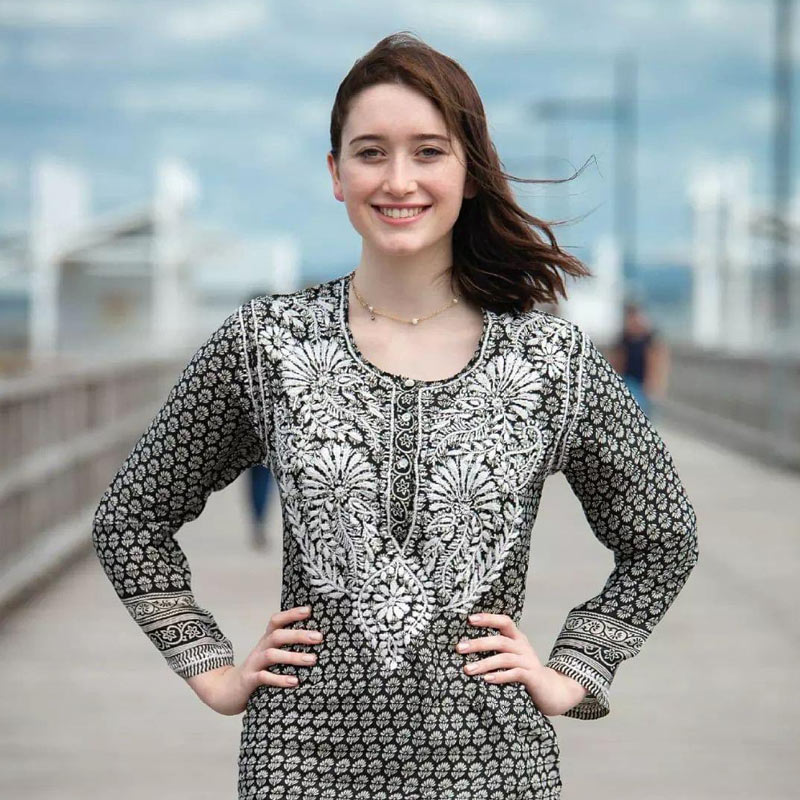Chikankari Embroidery
Our Handmade Embelishment
Chikankari embroidery is a time-honoured craft that originated in Lucknow, India, centuries ago. It involves a meticulous process of hand embroidering intricate patterns onto fabric, typically cotton, silk or georgette. Here`s a brief overview of the embroidery process.

Design Transfer
The artisan begins by transferring the design onto the fabric using water-soluble ink or tracing paper.
Stitching
Skilled artisans use a variety of stitches, including the flat stitch, backstitch, and chain stitch, to create the intricate patterns. Each stitch is carefully executed to ensure precision and uniformity.


Pattern Filling
Once the outline of the design is stitched, the artisan fills in the patterns with additional stitches, adding depth and texture to the embroidery.
Washing and Finishing
After the embroidery is complete, the fabric undergoes a washing process to remove any traces of the design transfer ink and to soften the fabric. Finally, the embroidered fabric is ironed and inspected for quality being being incorporated into the final garment.

This labour-intensive process requires exceptional skill and patience, often taking several days or even weeks to complete depending on the complexity of the design. The result is a stunning piece of clothing adorned with intricate Chikankari embroidery, embodying elegance, heritage and craftmanship.



